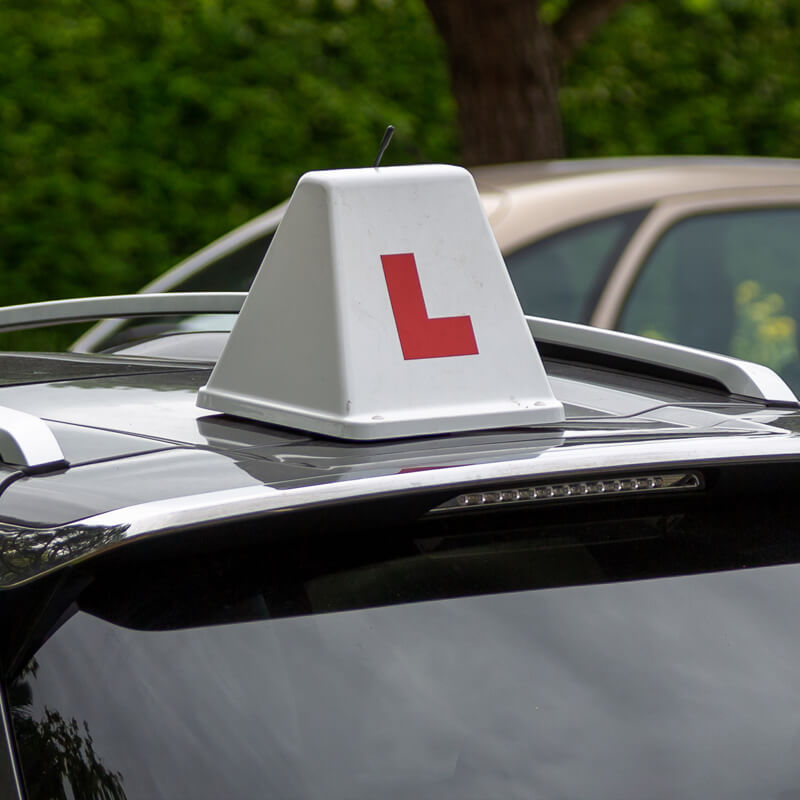ADI Part Three Instructional Ability Test

The final stage in becoming an approved driving instructor is the Instructional Ability Test.
You must pass the Instructional Ability Test within two years of passing the Theory Test (Part One) and with a maximum of three attempts.
It’s essential that you are fully prepared otherwise you may just have to start the whole process all over again!
The object of the Part Three Test is to assess the quality of your instruction and your ability to pass your knowledge on to pupils.
The test is in two parts, each of which lasts about half an hour.
You must pass both parts on the same test.
The Instructional Ability Test covers three main key subject areas:
- Core competencies
- Instructional techniques
- Instructor characteristics
The Part 3 Test -Instructional Ability Test
You will be asked to demonstrate your knowledge and ability by giving practical driving instruction to the examiner who will play two of the following parts:
- A beginner or partly trained pupil
- A pupil who is at test standard
- A qualified driver taking driver development training
For each of the two roles, the examiner will choose a test that includes a preset combination of two of these exercises:
- Safety precautions on entering the car, and explanation of the controls
- Moving off and making normal stops
- Driving the vehicle backwards and while so doing entering limited openings to the right or left
- Turning the vehicle round in the road to face the opposite direction, using forward and reverse gears
- Parking close to the kerb, using reverse gears
- Practical instruction on how to use mirrors and how to make an emergency stop
- Approaching and turning corners
- The judgement of speed and general road positioning
- Dealing with emerging at T-junctions
- Dealing with all aspects of crossroads
- Dealing with pedestrian crossings and giving appropriate signals by using your indicator and your arm in a clear and unmistakable manner
- Meeting, crossing the path of and overtaking other vehicles, including allowing enough clearance to include following distance for other road users
At times a supervising officer may also be present in the back of the car. This is nothing to worry about as they are there to check the examiner, not you.
The test vehicle
In order to complete the Part Three Test you must provide a car that is:
- Fully taxed
- Insured
- Valid MOT (if necessary)
You must also ensure that:
- Your car is a hatchback, saloon or estate car with a rigid roof
- Be in a clean and roadworthy condition
- Have working seat belts
- Be manual transmission
- Be right-hand drive
- Have an easily adjustable driving seat
- Seat for a forward-facing front passenger
- Head restraints for both the front seats
- Have an internal rear-view mirror that the examiner can use when sitting in the driving seat
- Not be fitted with any ‘space saver’ tyres
- Display two L-plates (D-plates in Wales)
Your insurance for the Instructional Ability Test
Your insurance must cover, for the time during which the examiner is driving, any liability that the examiner may have for all third party and damage risks and for liability to any passenger, including any official passenger.
Your insurance should cover any DVSA examiner.
The insurance cover should not name a specific examiner as the driver because we cannot guarantee that a particular examiner will conduct the test.
We cannot accept responsibility for risks not covered by insurance, including the loss of any no-claims bonus or the cost of repairing any minor damage.
If either the car itself or the insurance does not meet with these requirements, the test will not be conducted and the fee will be forfeited.
The DVSA is aware that insurance companies sometimes ask for certain information about examiners.
It is the Agency’s policy for data protection and security reasons not to disclose personal information about examiners.
However, in exceptional circumstances, the examiner will provide you with their name and confirm that they are over 25 years old on the morning of the test, but no further personal details will be made available.
What happens during the ADI Part Three Test
At the test centre, you will need to show your valid driving licence (GB or Northern Ireland).
If you have a new photocard style driving licence you should bring parts with you.
If you have an old-style licence you will need to bring along your passport or trainee licence if you have one.
Once the examiner is happy that your vehicle is safe to conduct the test, he/she will stay in character to ensure that the learning environment is as realistic as possible, but there may be times when this doesn’t happen for safety reasons or for giving clearer instructions.
You should make sure that your instruction is tailored to the standard of the ‘pupil’ the examiner is playing.
The instruction you give should be tailored to the time available and to the standard of the ‘pupil’ being role-played by the examiner.
You will probably find it helpful to establish the depth of the ‘pupil’s’ knowledge in each phase, by asking questions and observing the ‘pupil’s’ performance as you would with a real pupil you had not taught before.
How will I be assessed?
In assessing your performance, the examiner will take into account:
- The method, clarity, adequacy and correctness of instruction given
- The observation, analysis and correction of faults committed by the pupil
- Your general manner
You will be expected to maintain control of the lesson, be patient and tactful and give encouragement to the ‘pupil’ at all times.
What is assessed is the relevance of the instruction for the ability of the pupil and to the particular conditions on the road on the day of the test.
Registering as an approved driving instructor
After you pass the Part 3 Test you can apply to join the Register.
You cannot give paid instruction unless you are registered unless you still have a valid trainee licence.
You must apply within your one year of passing your Part Three Test or your qualification will become invalid and you would have to apply to start the qualifying process again.


